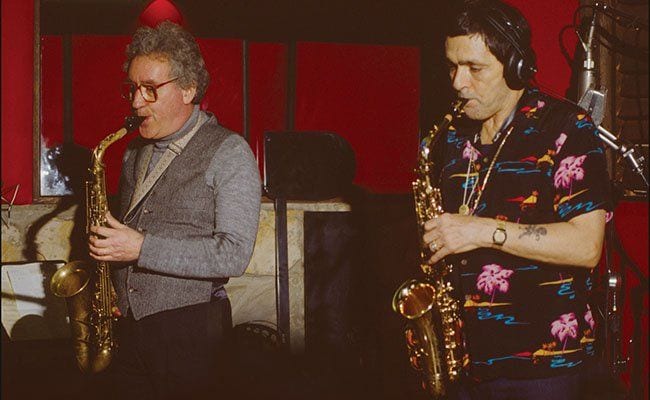
Today, Art Pepper is perhaps best known for the drug-addled exploits chronicled in his rather infamous—often rambling but nevertheless riveting—autobiography, Straight Life. It’s an unfortunate oversight for one of the leading lights of the post-bop era on the alto saxophone. Along with Cannonball Adderley, Pepper’s approach to the instrument would largely inform the sound and feel of those who followed in his footprints, yet because of his lengthy career derailment and personal demons, he missed out on a large portion of what could’ve been an otherwise even more legendary career. Fortunately, Pepper was largely able to straighten himself out in the final years of his life, producing some of the best work of his career and proving to still be in fine form despite the damage he’d done both personally and professionally.
Art Pepper Presents “West Coast Sessions!” Volumes Three [1982] and Four [1979], a pair of newly reissued late ‘70s sessions, are a testament to this, as he’s in fine form throughout both. Tackling a handful of standards on each with the help of fellow saxophonist Lee Konitz and trombonist Bill Watrous, Pepper’s round, accented tone cuts through the mix without ever sounding forced or over-rehearsed. There’s also a relaxed fluidity to his soloing that helps warm the occasionally strident tone of the alto saxophone. On Volume 4’s reading of “Begin the Beguine”, for instance, Pepper and Watrous deftly navigate the well-trod standard’s recognizable melody, playing off and around one another before delivering one finely conceived spotlight moment each.
To be sure, there’s nothing here that necessarily rewrites the career of any of those involved, but both albums nonetheless offer a fine collection of relaxed, well-played post-bop. Volume 4 is particularly interesting given the prominence of Watrous (whose session this was, technically). A dexterous player, Watrous’ command of the somewhat unwieldy trombone is a marvel to behold. His solos often play more like those of a trumpet: his tone and form are effortlessly smooth and precise. Notes on the instrument can often get lost within one another, but his approach affords each its own distinct separation through his bright and inviting tone.
“When Your Lover Has Gone”, in particular, offers a fine showcase for Watrous’ prowess on the instrument, his statement of the melody measured and subtly nuanced leading into a fine lone section covering the full range of the instrument. Never flashy, his solo is a wonderfully melodic masterclass in jazz trombone. Similarly, “For Art’s Sake” finds the trombonist matching Pepper’s nimble melody note-for-note and then some, giving the saxophonist a run for his money on an effortlessly melodic motif over a tight, comping rhythm section.
Paired together with Konitz, Volume 3 plays like a classic meeting of twin titans of the horn circa the late-1950s. Playfully playing off one another, Konitz — a contemporary of Pepper with an equally influential, if also understated approach to the horn — manages to go toe-to-toe with Pepper throughout. Opening track “S’Wonderful” is a fine reading of the Gershwin classic, the pair wending their way through the melody, outlining a tight series of well-placed harmonies that eventually diverge into two effortlessly executed solos.
“A Minor Blues in F” carries a decidedly throwback feel, sounding some 20-30 years older than its 1982 recording would indicate, with Konitz and Pepper employing a warmth and depth to their respective instruments that lead into a pleasantly surprising first chorus bass solo. The oft-covered “Cherokee” allows both saxophonists to play around with the iconic melody, breaking it down and then chasing the next through the tune’s burning tempo (though admittedly not as fast as Pepper likely would’ve taken it several decades prior). It’s another fine solo showcase for all parties involved.
By no means essential, this pair of recordings nonetheless helps set the record straight in terms of Pepper’s significance within 20th-century jazz. As such, it offers a fine example of a life turned around in time to enjoy a few good years and even better records.


![Call for Papers: All Things Reconsidered [MUSIC] May-August 2024](https://www.popmatters.com/wp-content/uploads/2024/04/all-things-reconsidered-call-music-may-2024-720x380.jpg)



